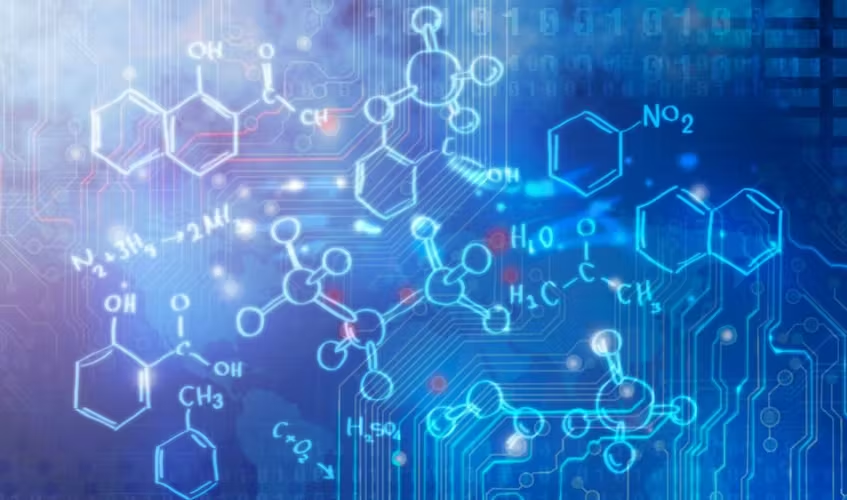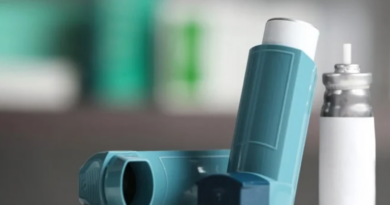Alcohols, Oxalyl Chloride, and Me
People usually call me DMSO or (CH3)2SO, but my real name is Dimethyl Sulfoxide. A largely nontoxic colorless liquid, I have been used by scientists to dissolve a variety of substances since the 20th century; my natural amicable character, attributed to possible hydrogen bonding and strong dipole moment, can dissolve anything from therapeutic reagents to toxic agents that would not dissolve in other solvents such as water (Martin, Weise and Niclas, 1967; Brayton, 1986).
It wasn’t until the late 20th century when my potential for oxidation was realized, though, with “Swern oxidation” (Omura, Sharma and Swern, 1976). Using me alongside Oxalyl Chloride, otherwise known as (COCl)2, can transform alcohols into ketones or aldehydes. Normally, oxidizing a primary alcohol, in other words, a -OH group at the tail end of a carbon chain, shoots it right to a carboxylic acid, skipping the aldehyde stage. But in many cases scientists don’t want to go all the way to carboxylic acids – that would be like using a flamethrower to kill a mosquito sitting on the carpet. You’ll just set the carpet on fire unnecessarily. That is why scientists need something more like a bug spray that can stop the oxidation of primary alcohols at an aldehyde.
Today, there are two main “bug spray” brands that chemists can use: me or a cranky red powder called Pyridinium Chlorochromate, or PCC. But people don’t really use PCC anymore. I successfully beat PCC and became the household name – the oxidation champion so to speak. Chances are that you’ve used a product manufactured using me. I really am everywhere.
You see, Swern oxidation played a big role in revolutionizing human lives. Many anticancer and steroid medications are reliant on me to be commercially viable (Fang et al., 2018; Zampella and Fiorucci, 2019). Simply using Swern oxidation rather than some complicated workaround can slash manufacturing costs, thereby lowering the cost of pharmaceuticals and saving millions of lives. What’s more, some medications wouldn’t even exist without me. Many pharmaceutical companies don’t conduct research on potential drugs unless they think they can be profitable; that means compounds with high manufacturing costs are ignored. Swern oxidation, with its great cost savings, essentially gave previously under-researched medications a fighting chance. And it’s not just pharmaceuticals; I also play a huge role in the manufacture of many herbicides (Yukio et al., 2021). If you think about how modern herbicides increased agricultural yields and reduced famines, you start to get a feel for my impacts on the world. Not to brag, but there aren’t many reactions better than mine.
Even today, almost half a century since Swern oxidation was first developed, organic chemists simply can’t get enough of me and still regularly develop new variations. Some days, they give me a new colleague, Methyl Chlorosulfonate, to work with instead of Oxalyl Chloride, in the pursuit of better yields (Davidovich, Kozlov and Smushkevich, 2020). Other days, I’m paired up with acid anhydrides (Albright and Goldman, 1967). But, regardless of who is sitting next to me at work, I am a staple of oxidation.
After reading all this, you must be wondering what makes me, and Swern oxidation, so special. For one, I am more environmentally friendly than PCC. Chromium, especially the +6 oxidized version of it found in PCC, has been shown to accumulate in and damage both human and animal tissues. Furthermore, it can hamper the metabolism of plants (Prasad et al., 2021). Although I am not totally innocent in terms of environmental harm – Swern oxidation leads to the production of Dimethyl Sulfide, which also has environmental risks – there are workarounds to deal with Dimethyl Sulfide production (i.e. binding me to a polymer), whereas you can’t really work around chromium (Caprio, 2005). As a result, any eco-conscious scientist would put me on the job and not PCC.
Another aspect that makes me special is that I can – and must – operate at temperatures well below -50ºC, such as in dry ice baths held at -78ºC (Omura, Sharma and Swern, 1976). Such low temperatures allow for yields of over 95% alongside high chemoselectivity, as side reactions generally do not occur at these low temperatures (Omura and Swern, 1978). High yields like that go a long way when you need to manufacture complex organic molecules. Now, if you know anything about Collision Theory, you’re likely raising eyebrows right now. It is not typical for a reaction to be so viable at temperatures like -78ºC; reactions need collisions to occur, but they are painfully rare at low temperatures. This doesn’t apply to Swern oxidation for two reasons. If you are into kinetics, it’s because I am the solvent and exist in high concentrations. The other reason stems from the magic of thermodynamics.
To fully understand the thermodynamic reasons, you have to look at the full reaction mechanism of Swern oxidation. My oxidization of an alcohol can be broken down into two big stages: my initial reaction with Oxalyl Chloride and the part where I actually oxidize the alcohol. Let’s start with the initial reaction. Normally, my head (the oxygen) draws all the electrons away from my body (the sulfur atom). This results in a net negative charge at the oxygen, which makes the oxygen atom start to crave positively-charged nuclei. In other words, I have become a great nucleophile.
This is where my good friend Oxalyl Chloride comes in. Just like my oxygen atom, Oxalyl Chloride’s oxygen atom also draws away electrons from the attached carbon atom, giving it a positive charge. My oxygen atom, attracted by this positive charge, transfers its electrons to the Oxalyl Chloride’s carbon atom, forming a covalent bond. Simultaneously, an electron pair originally used for the bond between the oxygen and carbon in Oxalyl Chloride is pushed out and into the oxygen atom. The resulting molecule is a combination of me and Oxalyl Chloride; think Transformers.
Now, there is a positive formal charge at my sulfur atom and a negative charge at Oxalyl Chloride’s oxygen atom. The oxygen’s negative charge is unstable; there are too many electrons at a single atom. A pair of nonbonding electrons from the oxygen moves out and forms a bond with the neighboring carbon atom, pushing out the bond that the carbon previously had with chlorine, thus releasing a chlorine ion.
The next step is the Holy Grail – the part that makes my reaction occur even at such low temperatures. The newly-released chlorine ion, having a negative charge, attempts to bond with my sulfur, which has a positive charge. Since my sulfur can’t hold any more electrons, it simultaneously breaks its bond with oxygen. The electrons from this broken bond move to form a bond between the oxygen and carbon while, simultaneously, the bond between the two carbons is broken and changed into one between another oxygen and carbon. A new chlorine ion is released as the newly-formed oxygen-carbon bond pushes the original chlorine-carbon bond out. In an instant, two gas molecules – CO and CO2 – and a chlorine ion are formed, leaving only a Chloro Dimethyl Sulfonium Ion ([(CH3)2SCl]+), or CDS for short. This formation of gas leads to a dramatic increase in entropy, making the reaction thermodynamically favored even at low temperatures.
In the second and final stage, the alcohol finally gets involved. CDS has a positively-charged sulfur atom, which the alcohol’s oxygen attacks, breaking the sulfur-chlorine bond. This gives the resulting complex a positive formal charge at sulfur and oxygen. At this point, scientists add in bases such as Triethyl Amine, or Et3N. Et3N removes the hydrogen attached to the oxygen, thereby erasing its positive charge. Another Et3N removes a hydrogen in one of CDS’s two methyl groups, forming a negative charge at the carbon atom and initiating a concerted reaction: the nonbonding pair in the negatively-charged carbon steals the hydrogen on the carbon attached to the oxygen atom. The electron previously bonding the carbon and hydrogen together shifts to form a double bond between the carbon and oxygen. As a result, the oxygen-sulfur bond is pushed out, thus negating the sulfur’s positive charge. This happens all at once and the aftermath produces my cousin, Dimethyl Sulfide, or DMS, and a ketone (Klein, 2016, p. 535).
To sum it up, Swern oxidation uses Oxalyl Chloride, Et3N, alcohols, and me to produce carbonyls, DMS, Carbon Monoxide, Carbon Dioxide, and Et3NHCl (Klein, 2016, p. 535). Its relative mildness, high yield, and great chemoselectivity have collectively led to myriad applications (Omura and Swern, 1978). In turn, I have revolutionized the organic chemistry landscape, facilitating the creation of novel synthesis pathways for pharmaceuticals, herbicides, and a whole lot more (Fang et al., 2018; Yukio et al., 2021; Zampella and Fiorucci, 2019).
Call me haughty if you will, but I think the Swern oxidation that I enabled was amongst mankind’s greatest achievements of the 20th century.
Reference list
Albright, J. and Goldman, L. (1967). ‘Dimethyl sulfoxide-acid anhydride mixtures for the oxidation of alcohols’, Journal of the American Chemical Society, 89(10), pp. 2416-2423. doi:10.1021/ja00986a031.
Brayton, C. (1986). ‘Dimethyl sulfoxide (DMSO): a review.’, The Cornell Veterinarian, 76(1), pp. 61-90. Available at: https://europepmc.org/article/med/3510103 (Accessed: 3 April 2024).
Caprio, V. (2005). ‘3.04 – Ketones: Dialkyl Ketones’, Comprehensive Organic Functional Group Transformations II, 3, pp. 135-214. doi:10.1016/B0-08-044655-8/00049-0.
Davidovich, Y., Kozlov, S. and Smushkevich, Y. (2020). ‘Alcohol Oxidation in the Presence of Methyl Chlorosulfonate and Dimethyl Sulfoxide’, ChemistrySelect, 5(23). pp. 7013-7015. doi:10.1002/slct.202001365.
Fang, F. et al. (2018). Macrocyclization reactions and intermediates and other fragments useful in the synthesis of halichondrin macrolides. European Patent Office Patent no. EP3292130B1. Available at: https://patents.google.com/patent/EP3292130B1 (Accessed: 3 April 2024).
Klein, D. (ed.) (2016). Organic Chemistry. 3rd edn. New Jersey: Wiley.
Martin, H., Weise, A. and Niclas, H. (1967). ‘The Solvent Dimethyl Sulfoxide’, Angewandte Chemie, 6(4), pp. 318-334. doi:10.1002/anie.196703181.
Omura, K., Sharma, A. and Swern, D. (1976). ‘Dimethyl sulfoxide-trifluoroacetic anhydride. New reagent for oxidation of alcohols to carbonyls’, The Journal of Organic Chemistry, 41(6), pp. 957-962. doi:10.1021/jo00868a012.
Omura, K. and Swern, D. (1978). ‘Oxidation of alcohols by “activated” dimethyl sulfoxide. a preparative, steric and mechanistic study’, Tetrahedron, 34(11), pp. 1651-1660. doi:10.1016/0040-4020(78)80197-5.
Prasad, S. et al. (2021). ‘Chromium contamination and effect on environmental health and its remediation: A sustainable approaches’, Journal of Environmental Management, 285. doi:10.1016/j.jenvman.2021.112174.
Yukio, U. et al. (2021). Process for producing herbicide and intermediate thereof. China National Intellectual Property Administration Patent no. CN112969697A. Available at: https://patents.google.com/patent/CN112969697A/en (Accessed 3 April 2024).
Zampella, A. and Fiorucci, S. (2019). Cholane derivatives for use in the treatment and/or prevention of FXR and TGR5/GPBAR1 mediated diseases. United States Patent and Trademark Office Patent no. US11117926B2. Available at: https://patents.google.com/patent/US11117926B2 (Accessed: 3 April 2024).



